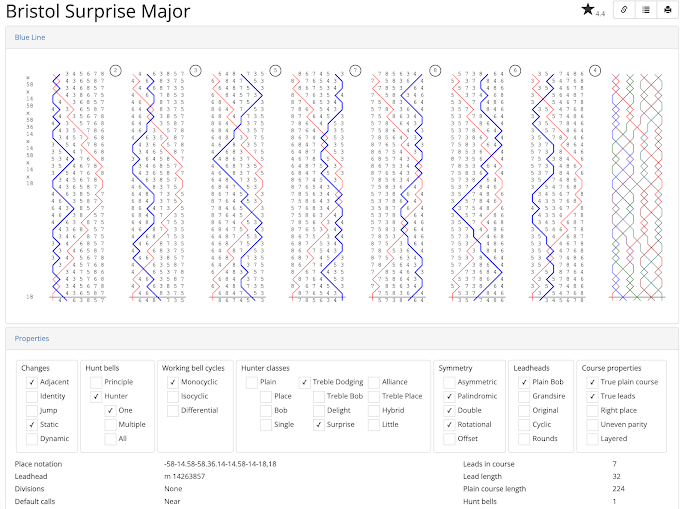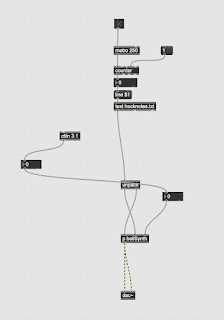Blog2: Change Ringing
Blog2: Change Ringing
Tuoye Ma
In the heart of many churches and bell towers with long histories lies an old tradition that mixes mathematics, teamwork, and music into a charming symphony of sound - Change Ringing. This complicated art form often involves the rhythmic ringing of bells in complex sequences, creating a serious of harmonious tones that resonate through the air.
The Origins:
Change Ringing was created in England, dating back to the 17th century. Historically, church bells were rung in a simpler manner, often for religious or civic occasions. However, change ringing created a new dimension, where the order of the bells' ringing changes continuously according to a pattern in advance.
The Mechanics:
At the core of change ringing lies a set of principles that command the order in which the bells are rung. Unlike traditional bell ringing, where the bells are swung through a full circle, change ringing involves swinging the bells through a much smaller arc. This controlled movement allows ringers to change the sequence of the bells' ringing rapidly and precisely.
Each bell in the tower is constituted by a wheel and a rope. The ringers, who are in a ringing chamber beneath the bells, pull on these ropes in a carefully coordinated way. The order in which the bells are rung changes with each sequence, creating a melody which keeps changing.
The Artistry:
Change ringing is not only about producing a serious of disharmonious sounds but rather about achieving a delicate balance and harmony. Ringing teams, known as "bands", must work together closely to execute the complicated patterns. Each ringer relies on their sense of timing and rhythm, listening absorbedly to the bells around them to ensure their actions align perfectly with the desired sequence.
The Mathematics:
Behind the seemingly random patterns of change ringing lies a rich mathematical structure. Different methods influence how the bells' order changes, with each method offering its own unique challenges and complexities. Ringers must understand these mathematical principles to navigate the patterns accurately, often relying on memorisation and practice to master the art.
The Community:
Change ringing is not just a musical but a communal pursuit. Ringers form close communities bound by their shared passion for the art form. Whether it's through weekly practices, festivals, or social activities, these communities provide support, fellowship, and opportunities for ringers to practice their skills and expand their repertoire.
Image3: This picture shows how people work together to create change ringing.
The Legacy:
In an era dominated by digital music and electronic entertainment, change ringing stands as a form to the unfailing power of tradition and human craft. It connects us to our past, reminding us of the rich cultural heritage that surrounds us. Moreover, it serves as a reminder of the beauty that can emerge when individuals come together in pursuit of a shared goal.
Change ringing may seem hard to understand to some people, but for those who have experienced its magic, it is an evolving and entertaining art or activity. It originates from a simple act of ringing bells to an art form that shakes our heart and soul. So, the next time you hear the distant sound of bells echoing across the countryside, take a moment to listen. You may could catch the beauty of change ringing.
Video2: https://www.youtube.com/watch?v=h5BNOOahWX0
It is a video talking about change ringing, what it is, how it works and its history.
Example
https://en.wikipedia.org/wiki/Campanology
It is a exhaustive link about change ringing in Wikipedia.

Image3: Here are the bells which would be used in change ringing.
Reference:
A most public of musical performances: the English art of change-ringing
This paper discusses the English tradition of change ringing, which is a unique form of musical performance involving bells. Change ringing is a method of ringing bells in a series of mathematical patterns called "changes," producing a distinct sound that is not melody-based but rather focused on the sequence and order of the bells. The paper likely explores the history, techniques, and cultural significance of change ringing, emphasising its role as a public and communal musical practice in England.
The Art and Science of Change Ringing
This paper discusses the practice of change ringing, which is a special form of bell ringing found primarily in England. Change ringing involves ringing a set of bells in mathematical patterns called "changes," without repeating any sequences. The paper likely explores both the artistic aspects, such as the musical patterns and rhythms created by change ringing, as well as the scientific principles behind it, such as the physics of bell ringing and the mathematical theory governing the patterns. Overall, it provides new angles into the combination of artistry and technical skill involved in this traditional English activity.




Comments
Post a Comment